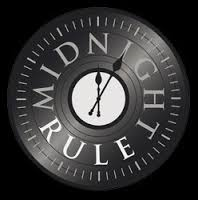 CMS Ruling on IPPS
CMS Ruling on IPPS
It’s been almost a year since CMS’ final ruling on the Inpatient Prospective Payment System went into effect and in that twelve month period there have been several additions made regarding conditions of payment and certifications. In case you need a refresher, the “2-Midnight Rule” is frequently talked about in healthcare and refers to criteria for determining if a patient should be classified as an admission or observation status for coding and billing purposes. While the level of treatment may not necessarily seem different from the patient’s perspective, there are subtle differences that are extremely important to how the account is coded and ultimately billed for. It also needs to be explicitly documented with intention as an inpatient admission in the patient’s chart.
IPPS/OPPS: Latest Regulatory Changes
As part of Medicare Part A payment, the latest regulatory changes appeared this year in the form of certifications: physicians must provide certification for all inpatient admissions and those certifications must be completed, signed and dated in the legal medical record prior to the patient’s discharge. In this case, it doesn’t necessarily have to be the admitting physician, but it does need to be a physician who is authorized to complete the certification and is familiar with the patient’s case and care plan.
The certification must include and the attestation made to:
- Authentication of the inpatient hospital admission order,
- The reason for the inpatient hospital services
- The estimated (or actual) time the patient is expected to (or did) require hospital care,
- Any plans for post-hospital care
- And, for critical access hospital, a certification that the patient may be reasonably expected to be discharged or transferred within 96 hours after admission.
Objection to the Regulations Proposed
Those who object to these regulations state that requirement for certification of inpatient services, other than extended hospital stays, isn’t supported by law. While CMS didn’t find the argument valid, the Outpatient Prospective Payment System for 2015 has proposed removing the requirement for certification except in the case of extended hospital stays.
2-Midnight Rule
The 2-Midnight Rule continues to be the most widely accepted definition of medical necessity criteria for inpatient hospital admission: if a patient requires treatment in the hospital beyond two midnights, and are reasonably expected to, or if they are prepping for a procedure, than inpatient admission is warranted. This rule is not, however, relative to the intensity of the level of care. So, as an example, it wouldn’t necessarily apply to ICU admissions by default – since it is an entirely different level of care.
2-Midnight Rule and Documentation Expectations
Behind the 2- Midnight Rule is the expectation that physicians will document promptly, properly and all-inclusively. With the advent of electronic medical records, this is supposed to become increasingly easy for them. Though, many healthcare providers would beg to differ – in fact, they may say that it has actually made it more difficult to document. Physicians are aware of the importance of documentation but they are, at times, limited by the very technology that has been designed to help them.
The new criteria for documentation includes, if you can believe it, more forms rather than less – and so even as we continue to move toward a fully electronic record, the regulations are still requiring physicians to thumb through actual paper documents- and even if they are electronic, it’s still another e-signature.
